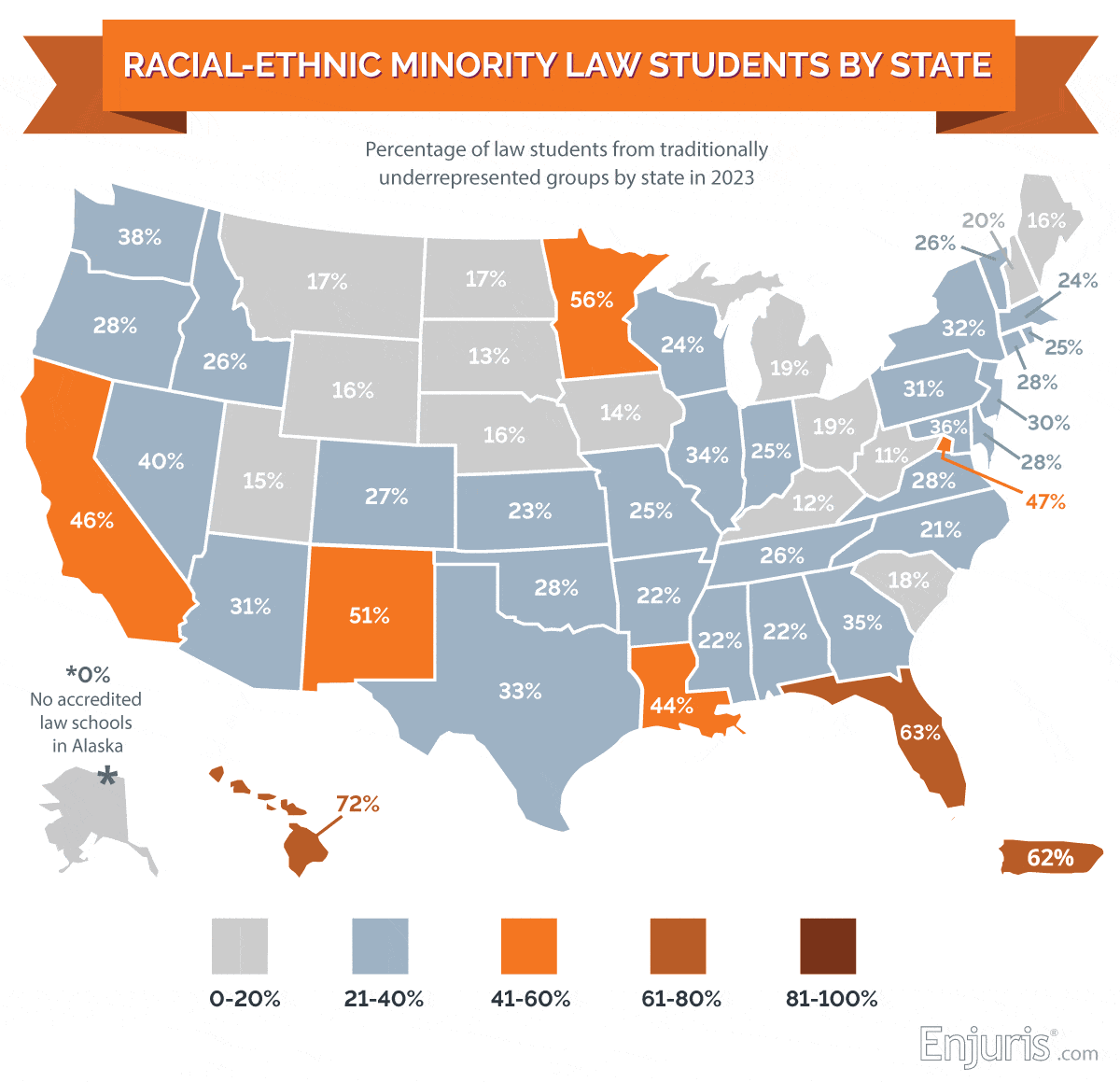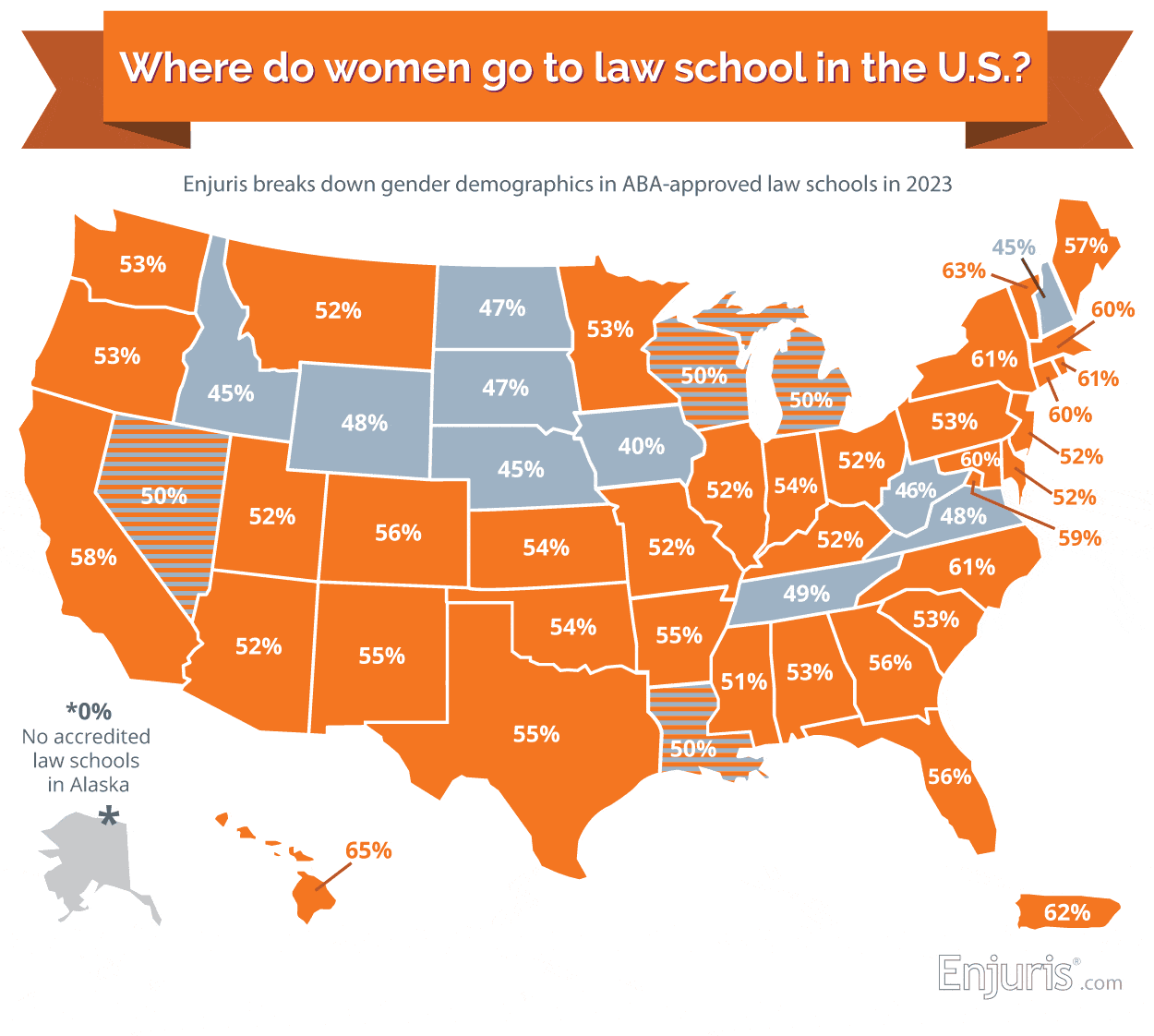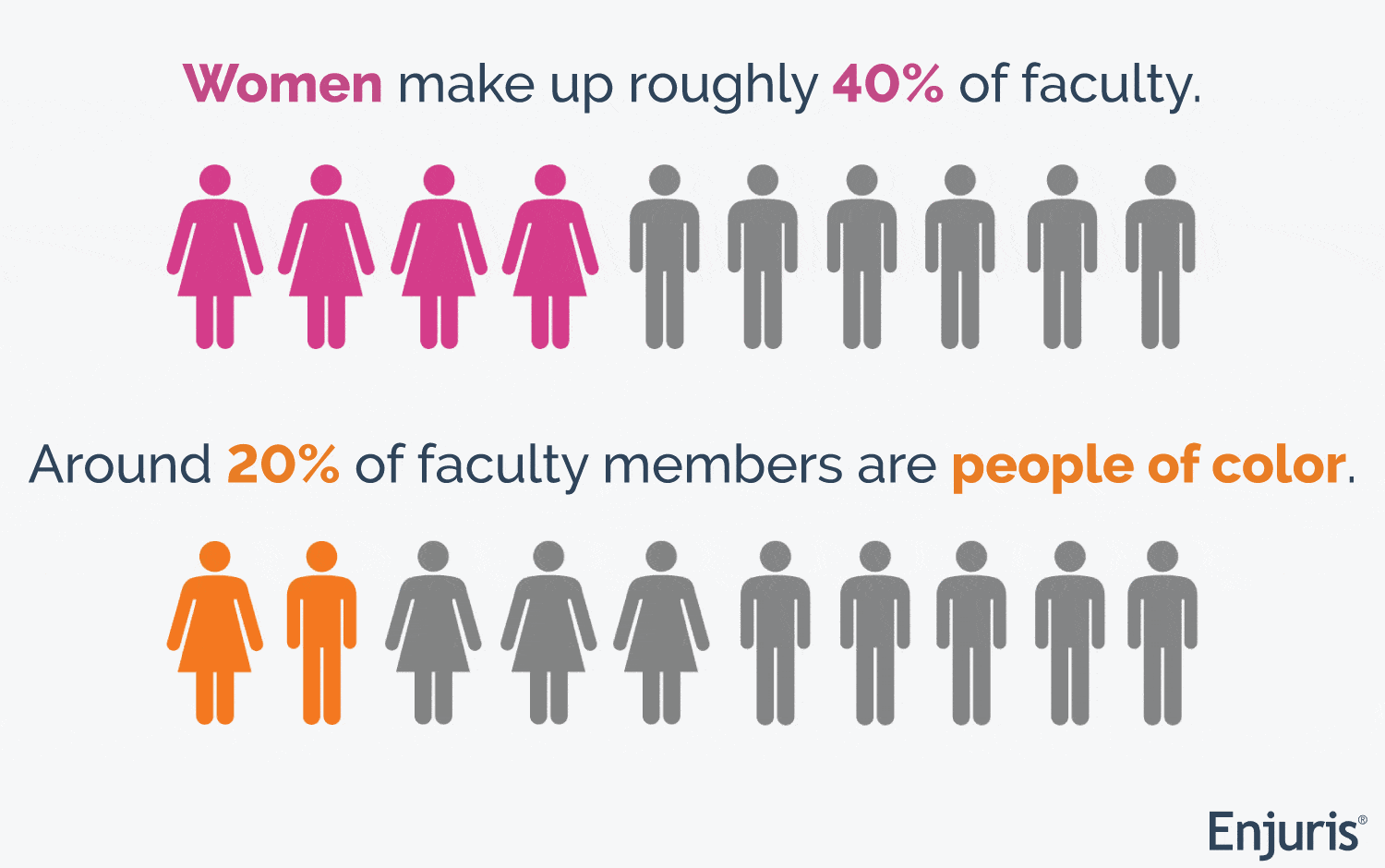
Most recent data reveals significant disparities in bar exam results
This article explores the bar exam pass rates of various racial and ethnic groups, highlighting significant disparities. Through an analysis of first-time pass rates, one-year success rates, and long-term success rates, we aim to shed light on potential biases and call for a closer examination of the exam's fairness.
Passing the bar exam is a crucial—and terrifying—step for anyone who wants to practice law. The exam is designed to evaluate whether you possess the necessary competence to practice law.
While the bar exam has served as a gatekeeper since its adoption in 1783, it’s not without its controversies. Among other things, critics argue that it may inherently disadvantage racial and ethnic minorities.
In this article, we’ll take a look at the bar passage rates of various racial and ethnic groups through three charts, focusing on first-time pass rates, one-year success, and long-term success within two years of graduation for the class of 2023.
While we may not conclusively determine if the bar exam is inherently biased, we can provide the data.
What is the bar exam?
In order to obtain a license to practice law in a particular state, you must (in most cases) pass the state’s bar exam.
The bar exam is a two-day exam (or, in some cases, a three-day exam) administered in each state to assess whether the examinee is competent to practice law in that state. Although the format may vary slightly from state to state, the exam generally includes the following sections:
- Multistate Bar Examination (MBE): The MBE consists of 200 multiple-choice questions, covering constitutional law, contracts, criminal law and procedure, civil procedure, evidence, real property, and torts. It is a six-hour exam aiming for a scaled score, with 140-145 considered passing in most jurisdictions.
- Multistate Essay Exam (MEE): Administered in 33 jurisdictions, it includes six essay questions on various legal topics. Examinees have 30 minutes per question to demonstrate their legal analysis and reasoning.
- State-specific components: Some jurisdictions may include additional multiple choice and/or essay questions focusing on state-specific laws.
- Multistate Performance Test (MPT): Consists of one or two 90-minute tasks testing practical lawyer skills through realistic scenarios. Examinees might draft legal documents based on provided statutes, deposition transcripts, and other materials.
- Multistate Professional Responsibility Exam (MPRE): A two-hour, 60-question multiple-choice exam on the ethics and professional responsibilities of lawyers and judges. It’s based on the ABA Model Rules of Professional Conduct and other ethical principles, and can be taken before the main bar exam.
Controversy surrounding the bar exam
Critics of the bar exam usually fit into one of two groups, and sometimes they're in both. The first group sees the bar exam more as a test of achievement rather than a measure of practical legal skills. They argue that the exam primarily assesses a candidate’s ability to memorize and recall legal information. However, if lawyers relied solely on their memory for legal arguments, so the argument goes, they would risk malpractice. In reality, being a competent lawyer requires many additional skills that the bar exam does not evaluate.
The second group believes the bar exam unfairly disadvantages racial and ethnic minorities. Their argument focuses on three main issues: the possibility of minority examinees experiencing microaggressions during the exam, the high costs of taking the bar exam, and the exam's language and writing style, which can create a language barrier.
With the arguments presented by the second group in mind, let’s take a look at the bar passage rates for racial and ethnic groups over the past three years, according to data released by the American Bar Association.
Bar passage rates for racial and ethnic groups
The first chart we’ll look at shows the percentage of graduates from the 2021 class who passed the bar exam within two years of graduation. This rate reflects the long-term success of graduates in passing the bar exam, regardless of how many attempts were made.
| Two-year bar exam pass rates for the class of 2021 |
|||
|---|---|---|---|
| Race or ethnicity | Examinees | Passers | Percentage |
| White | 21,301 | 19,852 | 93.20% |
| Black | 2,506 | 1,953 | 77.93% |
| Hispanic | 4,156 | 3,575 | 86.00% |
| Asian | 2,183 | 1,958 | 89.71% |
| Native American | 167 | 137 | 82.04% |
| Hawaiian | 44 | 29 | 65.91% |
| U.S. nonresidents | 879 | 796 | 90.56% |
| Race unknown | 1,318 | 1,184 | 89.77% |
| Two or more | 1,137 | 1,009 | 88.74% |
The chart above shows that Hawaiian examinees have the lowest pass rates, followed by Black examinees. The pass rate for White examinees is significantly higher, by 27.29 percent compared to Hawaiians and 15.27 percent higher than Blacks. Among minority groups, Asian examinees achieve the highest success rate at 89.71 percent.
The second chart we’ll look at shows the percentage of graduates from 2022 who passed the bar exam within one year of graduation. This measures success within a shorter timeframe than the chart above, again considering all attempts.
| One-year bar exam pass rates for the class of 2022 |
|||
|---|---|---|---|
| Race or ethnicity | Examinees | Passers | Percentage |
| White | 21,399 | 19,310 | 90.24% |
| Black | 2,432 | 1,749 | 71.95% |
| Hispanic | 4,202 | 3,396 | 80.79% |
| Asian | 2,197 | 1,862 | 84.70% |
| Native American | 177 | 136 | 76.84% |
| Hawaiian | 41 | 33 | 80.49% |
| U.S. nonresidents | 928 | 825 | 88.85% |
| Race unknown | 1,218 | 1,007 | 82.73% |
| Two or more | 1,183 | 980 | 82.88% |
As you can see from the chart above, Black examinees have the lowest success rate at 71.95 percent, while White examinees lead with the highest success rate of 90.24 percent.
The third chart we’ll look at shows the percentage of graduates from 2023 who passed the bar exam on their first attempt. This rate highlights the immediate success of recent graduates in passing the bar without any retakes.
| First-attempt bar exam pass rates for the class of 2023 |
|||
|---|---|---|---|
| Race or ethnicity | Examinees | Passers | Percentage |
| White | 21,296 | 17,988 | 84.46% |
| Black | 2,354 | 1,366 | 58.06% |
| Hispanic | 4,287 | 3,041 | 70.93% |
| Asian | 2,370 | 1,754 | 73.99% |
| Native American | 161 | 110 | 68.32% |
| Hawaiian | 37 | 23 | 62.16% |
| U.S. nonresidents | 728 | 592 | 82.73% |
| Race unknown | 1,106 | 844 | 76.32% |
| Two or more | 1,259 | 969 | 77.12% |
Finally, in the chart highlighting first-time bar passage rates for the class of 2023, you can see that Black examinees once again have the lowest success rate at 58.06 percent, and Whites have the highest success rate, at 84.46 percent.
Despite its role as a longstanding gateway to the legal profession, the bar exam's controversies, especially its impact on racial and ethnic minorities, merit close scrutiny. While definitive answers about inherent bias remain elusive, the provided data underscores the need for ongoing dialogue and potential reform within the legal education and licensure framework.





